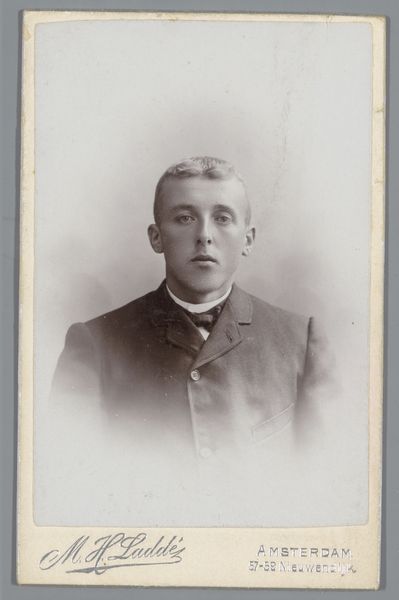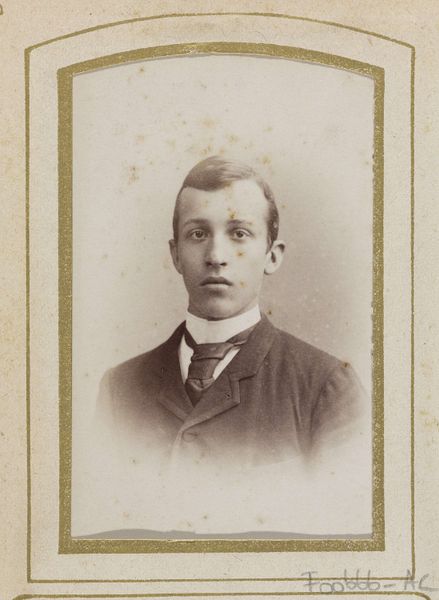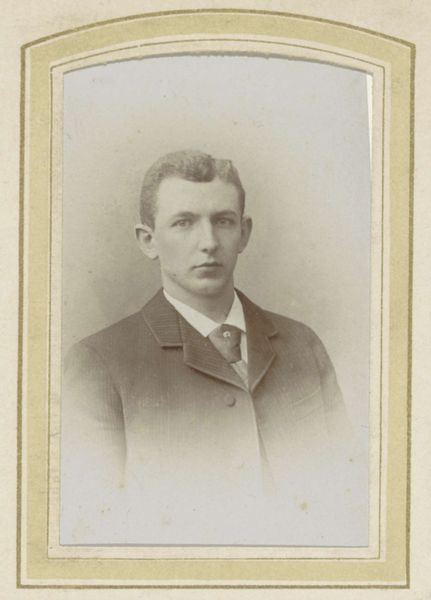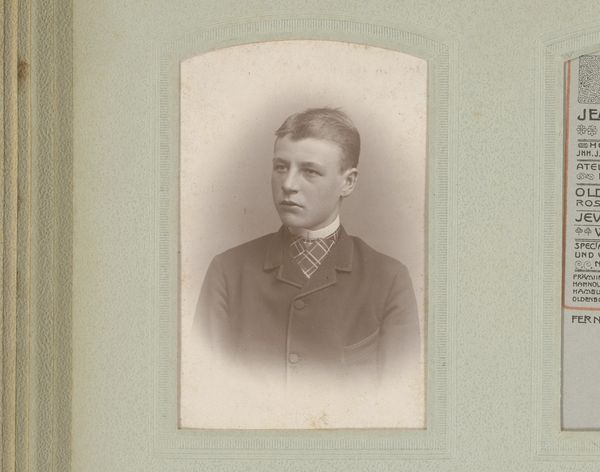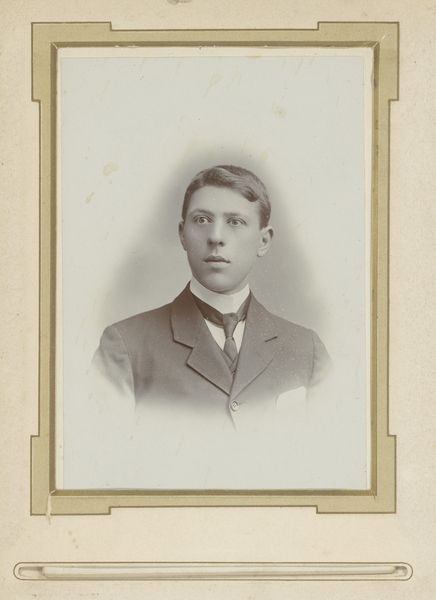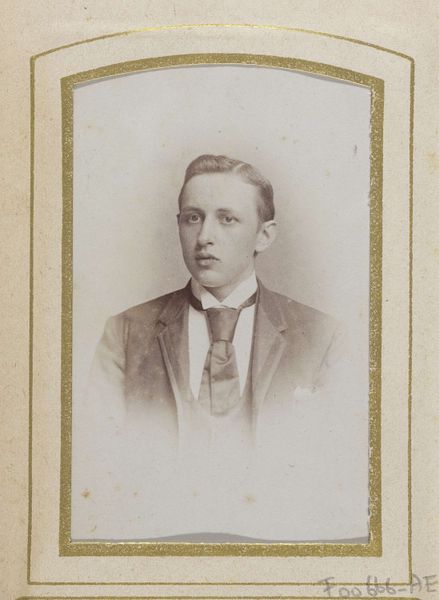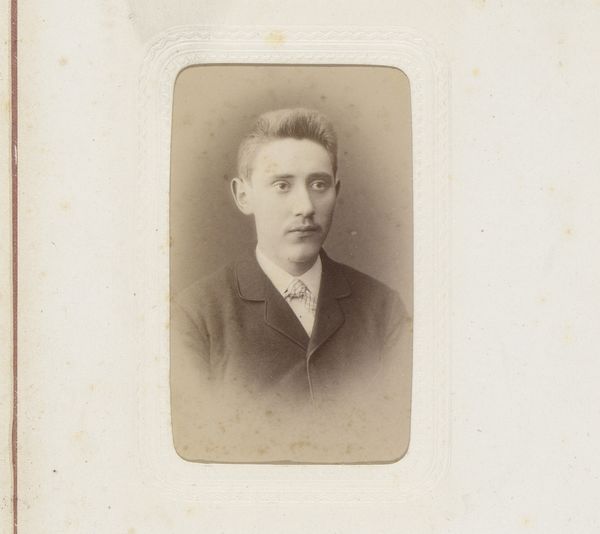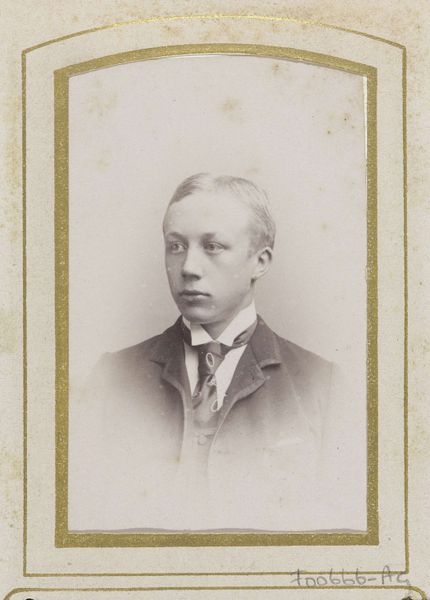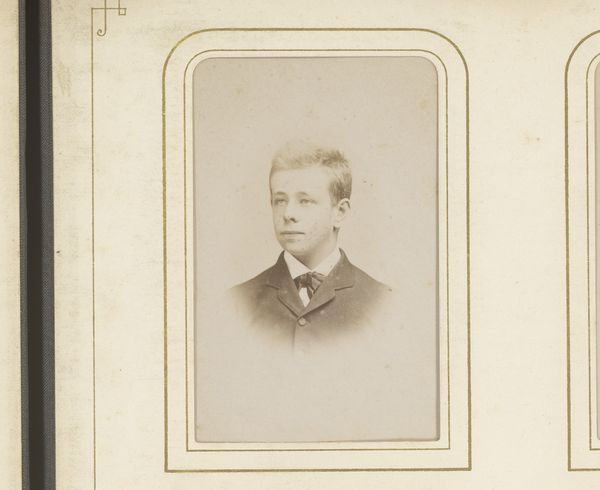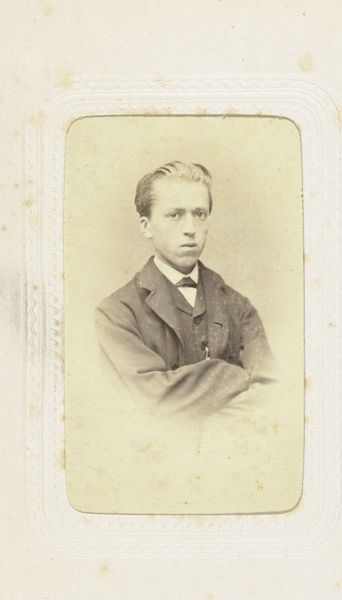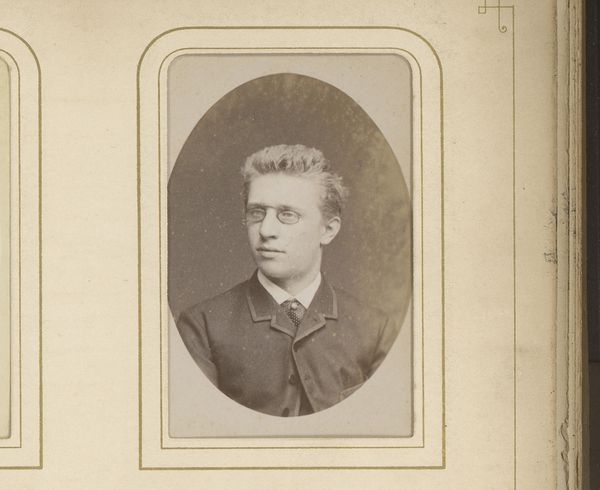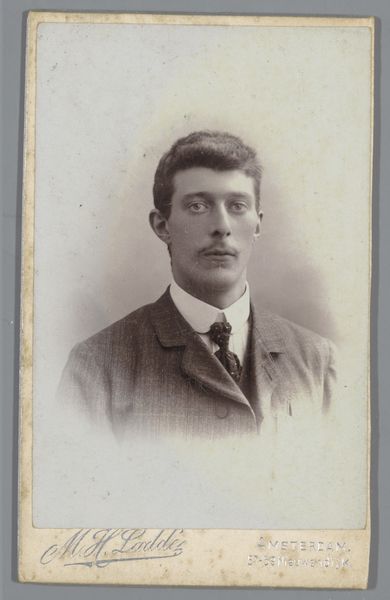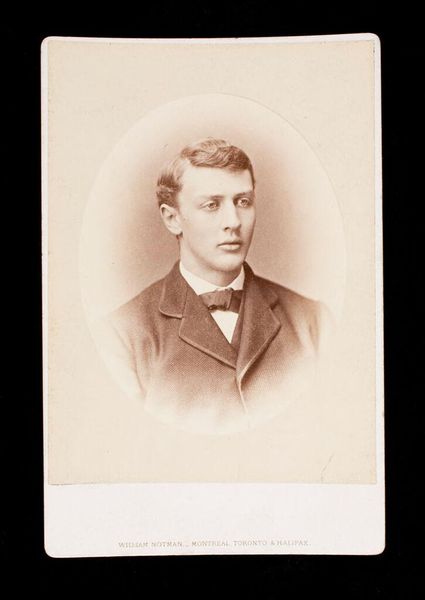
Studioportret van een jongen met zijn armen over elkaar c. 1863 - 1866
0:00
0:00
photography, albumen-print
#
portrait
#
photography
#
genre-painting
#
albumen-print
#
realism
Dimensions: height 80 mm, width 54 mm, height 296 mm, width 225 mm
Copyright: Rijks Museum: Open Domain
Editor: This is a studio portrait, "Studioportret van een jongen met zijn armen over elkaar," by Wegner & Mottu, dating from around 1863 to 1866. It’s an albumen print photograph. I find it interesting how posed and formal it feels, yet the boy's expression seems almost…uncomfortable. What stands out to you in this piece? Curator: As a materialist, I’m drawn to the albumen print itself. Think about the labor involved: preparing the glass plate, coating it with light-sensitive chemicals, exposing the image, printing onto albumen paper made from egg whites – likely sourced from a commercial bakery! Photography at this time was as much an artisanal craft as it was a budding industry, wasn’t it? This portrait speaks volumes about the rise of middle-class portraiture – an accessible form of representation facilitated by these chemical and industrial processes. How do you see his clothing fitting into this narrative? Editor: Well, his clothing seems quite respectable, a little formal, maybe signaling his family's status as participants in this burgeoning middle class you mention? The very act of commissioning a photograph like this suggests a certain level of economic stability and aspiration. Curator: Precisely! And it shifts the focus away from the singular artistic genius toward a complex network of labor and material production. From the manufacture of the chemicals to the labor of the photographer and the eventual consumption of the image. What social structures do you see being upheld by images like this one? Editor: It definitely reinforces ideas around class and maybe even the performance of a certain kind of boyhood. I never thought about photography in terms of labor like this before, it’s given me so much to think about. Curator: Likewise. Looking at the processes of production and consumption in this way enriches our understanding, doesn’t it?
Comments
No comments
Be the first to comment and join the conversation on the ultimate creative platform.
